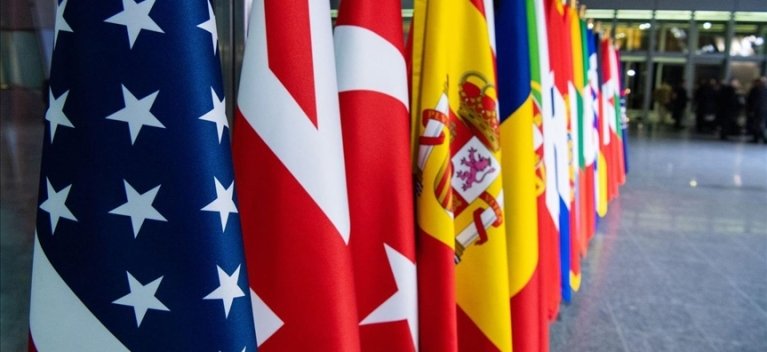Two months before the full-scale invasion, Vladimir Putin instilled fear in Russians by saying that it would take much less time for enemy’s missiles to reach Moscow if Ukraine joins NATO. Two-and-a-half years into the large-scale war, there is a real possibility that NATO’s missiles will indeed fly towards Russian land to protect the people of Ukraine.
Obtaining permission to use long-range weapons on the territory of Russia has become a top-priority goal for Ukraine’s diplomatic efforts. In May 2024, representatives of Western political community held a series of public discussions on this issue. Although Ukraine was allowed to use Western weapons over part of the Russian border, missile strikes against Russian military targets deep behind enemy lines remained a taboo scenario.
In August 2024, Ukraine’s Defense Minister Rustem Umerov met with US officials in Washington and gave them a list of targets inside Russia that Kyiv wants to hit with long-range ATACMS missiles. Ukraine is hoping to persuade at least one country to take on the leadership role in “long-range justice” initiative, which would be a significant step towards reaching a general consensus.
It is important to emphasize that Russia’s war against Ukraine is fueled by North Korean military assistance in the form of DPRK-made ballistic missiles that are being launched at peaceful Ukrainian cities. Moreover, US officials confirmed the transfer of hundreds of Iranian ballistic missiles to the aggressor state, which constitutes yet another violation of UN Security Council resolutions. This is in reference to delivery of hundreds of Fath-360 missiles with a maximum range of 120 kilometers. As a result, a number of countries are stepping up diplomatic pressure and preparing to introduce new sanctions against Iran. According to US Secretary of State Antony Blinken, the destabilizing influence of military cooperation between Iran and Russia reaches far beyond the Middle East.
Tehran denies reports of missile transfers to Russia. However, Iranian officials previously denied the fact that they supplied Russians with “Shahed” drones and helped them build a plant for domestic production of UAVs, which are terrorizing Ukrainian cities every day.
Collection of solid evidence that Iranian missiles were delivered to Russia is a matter of a few weeks, especially if they will be used against Ukraine. This would mean that the Kremlin is not interested in peaceful settlement, but seeks further escalation of military conflict. It is likely that the aggressor state received additional ballistic missiles without restrictions on their use. This fact should serve as another argument for giving Ukraine permission to strike deep inside Russia in order to destroy, among other things, Iranian missile launchers.
Although the actions of our partners are often guided by their fear of escalation, numerous military operations conducted by the AFU deep behind enemy lines, such as the Kursk oblast incursion, go to prove that the Kremlin’s red lines are just empty threats.
Western leaders are already rethinking their foreign policies. For example, bipartisan support is growing in the United States to lift restrictions on the use of long-range missiles by Ukraine. On September 13, 2024, US President Joe Biden is scheduled to meet with British Prime Minister Keir Starmer to discuss the possibility of authorizing long-range attacks on Russia. During the interview with Sky News, Antony Blinken confirmed that Biden “does not rule out” granting such permission to Ukraine.
It should also be stated that the United States and the United Kingdom, who are the key suppliers of long-range missiles, can grant such permission in private, which would make it less provocative, but not less significant for our enemy.
At the same time, we can’t but agree with the US Secretary of Defense Lloyd Austin who voiced an opinion that no single weapon, including long-range missiles, can win a war against Russia. It takes a whole range of military and non-military means to make the decisive difference in a full-scale war. Allowing Ukraine to strike deep into Russia could open the way for reconsidering NATO’s position on shooting down Russian air targets, which seemed unthinkable until recently.
Western leaders are also revising the policy of “not becoming a party to the conflict”, especially when it comes to their national security. Over the past six weeks, Russian drones have repeatedly violated the airspace of NATO countries (Poland, Romania, Latvia) during the massive attacks on Ukraine. The number of such incidents will only increase in the future.
Some politicians have explicitly stated that it is necessary to shoot down Russian air targets on the approaches to NATO’s eastern flank. For example, Polish Foreign Minister Radoslaw Sikorski believes that Poland is obliged to shoot down Russian missiles over Ukraine. Meanwhile, Lithuanian Foreign Minister Gabrielius Landsbergis is convinced that Russian drones began to crash on NATO territory due to the inaction of member states.
Kyiv openly calls on the Western countries to use their air defense systems to shoot down Russian missiles and drones over the territory of Ukraine. NATO members are in the process of discussing and accessing the possible consequences of such a decision.
It is important to emphasize that the European security landscape has undergone changes and requires new approaches. The decision to shoot down Russian targets with the aim of protecting the airspace of NATO member states would greatly benefit Ukraine and demonstrate NATO’s viability. After all, Russia understands only the language of force.
Source: censor.net
